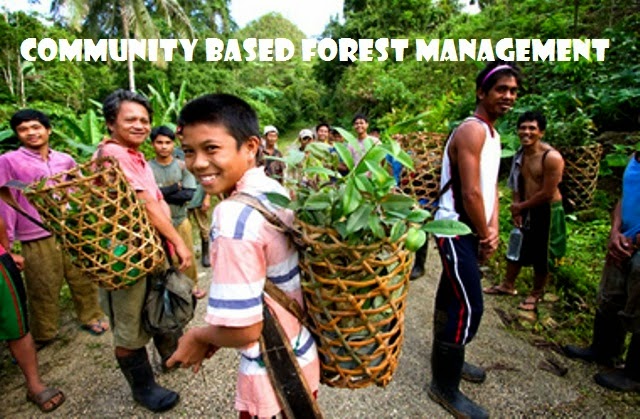COMMUNITY
BASED FOREST MANAGEMENT
by Antonio C.
Antonio
March 22,
2015
The concept,
definition and operational character of the Community Based Forest Management
program can be deduced from the following researched materials authored by
Teodoro R. Villanueva and Antonio C. Antonio…
“Community
based forest management (CBFM) is a program that addresses the continuing
destruction of our remaining natural forests as well as responds to the issue
of upland poverty, considered as one of the root causes of the country’s
deforestation problem.
CBFM is based
on the concept of “People first and sustainable forestry will follow.” It gives organized and empowered communities
the right and responsibility to directly manage and benefit from forest land
resources.
The
government believes that when the issues of poverty and inequitable access to
resources in the uplands are addressed, local communities themselves will
participate in protecting and managing the forests.
CBFM is an
important response to forest destruction.
The continuous destruction of our forests is triggered not only by the
physical cutting of the trees, but is driven by the extreme poverty suffered by
our upland people, many of whom turn to unsustainable forest practices for
survival. (Villanueva, 2002)
“The CBFM concept is a workable one.
There are several CBFM projects in the Caraga Region that worked and are
continually providing benefits for the stakeholders involved. If at all
there are failures it is because there are fundamental flaws such as the lack
of technical skills, capital, and linkages to financial institutions.
The CBFM, from the business standpoint,
should have the following basic requisites to succeed as a business venture:
(1) Management; (2) Manpower; (3) Material; (4) Market; and (5) Money (or
financial capability)... the 5 “Ms”. From the problems already mentioned
(therefore: “the lack of technical skills, capital, and linkages to financial institutions”),
it seems apparent that the problem is in Nos. 1 (Management) and 5 (Money).
No. 1 (Management) should relatively be the
easiest to solve since it only entails a “good choice” of manager. No. 2
(Manpower) should provide the solution. From the ranks of those attached
to and allied with the CBFM organization, someone should be able to fill up the
top managerial position. Someone who could meet the expectations of all
stakeholders. In case no one makes the grade from within the
organization, the appointment of an outsider will be the next best option.
One of the 5 “Ms” also presents a solution to
problem No. 5 (Money). The demand for timber and wood products will
always be good considering its dwindling supply. So long as the CBFM has
No. 3 (Material), (in this case timber, wood and other forest products,) it
could be used to gain financial resources to fund its operations. The
giving of “advance payments” is an accepted wood industry practice in the
Philippines. So long as the buyer (supposed to be another stakeholder) is
assured of the supply of the good, he will be more than willing to advance
payments. Another strength of the CBFM organization is the fact that wood
and timber products is considered a seller’s market... and therefore, the CBFM
has the option to maximize selling prices within the limits of what the buyer
can afford and is willing to buy. The CBFM management, however, should
also make certain that their buyer/s has/have legitimate Wood Processing
Permits (WPP) issued by the Department of Environment and Natural Resources
(DENR)... or else, the transaction will be deemed illegal.” (Antonio, 2014)
CBFM, like
other worthy government upland development programs, is a laudable one. It is only in the implementation stage where
the CBFM (together with other government programs) fail. Given good managers and management practices,
success can be guaranteed for program: Community Based Forest Management.
Just my little thoughts…
(Please visit, like and share Pro EARTH Crusaders on Facebook
or follow me at http://antonantonio.blogspot.com/.)
REFERENCES:
Antonio, A.
C., (2014). CBFM and Participatory Management. Retrieved on the 20th
day of March 2015 from http://antonantonio.blogspot.com/search?q=CBFM
Villanueva,
T. R., (2002). Upland Ecosystem Management (2nd Edition). University
of the Philippines Open University, Los Banos, Laguna, Philippines

No comments:
Post a Comment